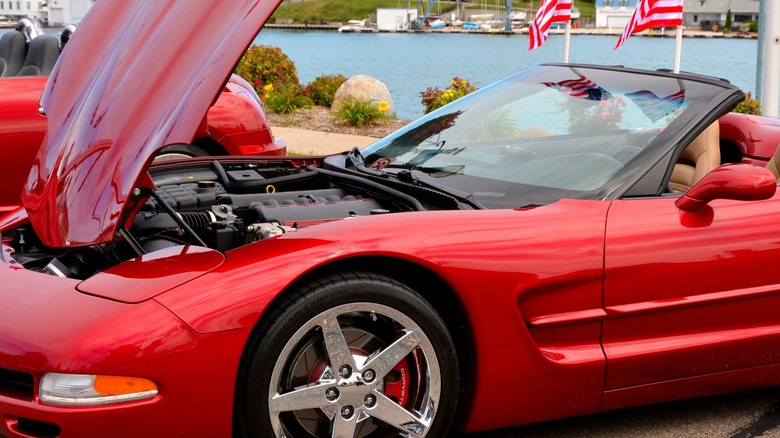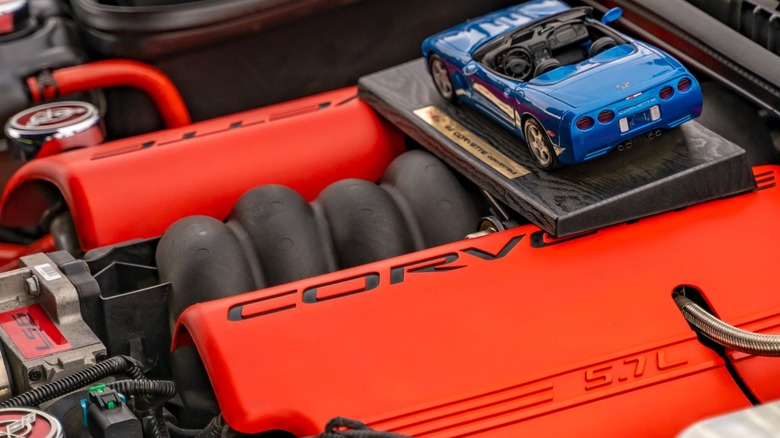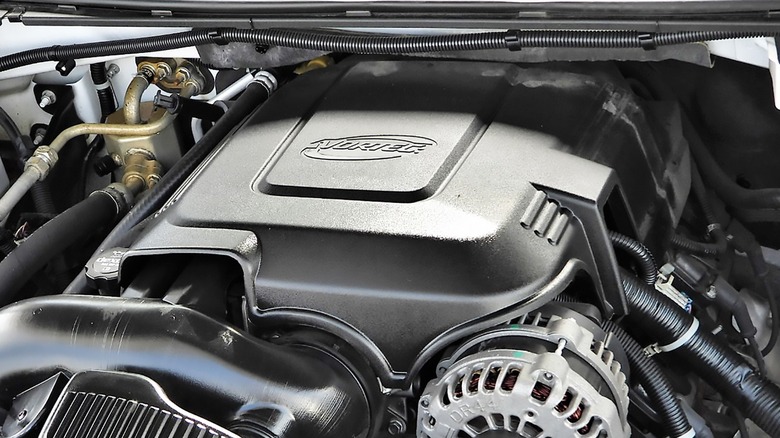
Tony Savino/Shutterstock
By Ron King/
Over the years, General Motors has employed several eight-cylinder engine designs ranging from the inline «Straight-8» to the current LT1 V8. However, many agree that the small-block LS engines were among GM’s most popular V8 powerplants. But where does the Vortec engine fit into GM’s V8 lineup?
GM utilized the LS engine-coded V8s primarily for its sportscar lineup. On the other hand, the automaker used Vortec engines in its pickup trucks and SUVs. While LS and Vortec engines share many similarities, some notable differences exist. MotorTrend recognizes the similarities between the two engine monikers to the point that it uses the LS term generically when referring to either.
While Vortec engines typically displace fewer cubic inches (or liters if you prefer) than LS variants, their cast iron blocks further distance them from the aluminum blocks of the LS. However, some exceptions to this rule exist. Let’s explore the differences and perhaps some similarities between LS and Vortec engines.
General Motors LS engine overview

Iv-olga/Shutterstock
General Motors began developing its Gen-III Small-Block engine to replace its popular Gen-II V8 in the early 1990s. Chevrolet debuted the new 5.7-liter V8 engine, designated with engine code LS1, in the all-new C5 Corvette in 1997.
The LS1 featured an aluminum block and cylinder heads with steel or cast iron inserts for high-wear areas like valve guides and cylinder walls. Besides the reduced weight, the firing order was the most significant difference between the LS1 and its predecessor. The LS1 fires its cylinders in a 1-8-7-2-6-5-4-3 order, whereas the Gen-II V8 uses the 1-8-4-3-6-5-7-2 firing order.
The LS lineup’s horsepower values range from 345 in the 1997 5.7-liter LS1 Corvette to 638 in the 6.2-liter LS9-powered ZR1 Corvettes produced from 2009 to 2013. The ZR1 LS9 engine benefits from lightweight titanium connecting rods and a «2.3L Roots-style supercharger.» It also has 0.5 liters more displacement than the original LS1’s 5.7 liters.
What’s different about the Vortec small-block V8?

DoubleR- Photos/Shutterstock
The Vortec name became popular with the 4.3-liter V6 used in GM’s smaller pickup and SUV lineup. The Vortec technology’s success led to the name’s expansion to cast iron-blocked V8s destined for larger pickups, SUVs, and some luxury sports cars. While the 5.7-liter LS is the most popular, Vortec V8s come in 5.3-, 6.0-, and 8.1-liter versions.
GM designed the LS V8 around existing Vortec intake airflow technology and then used the LS design to produce the Gen-III Vortec V8. As a result, the two engine types have more similarities than differences. For example, although cast from different materials, the two engine blocks share the same mold designs.
This commonality means LS and Vortec blocks share similar accessory mounting bosses, making engine swaps reasonably straightforward. In addition, the plethora of cast iron Vortec V8s in scrapyards and their additional strength over the aluminum LS make them prized by high-performance engine builders.